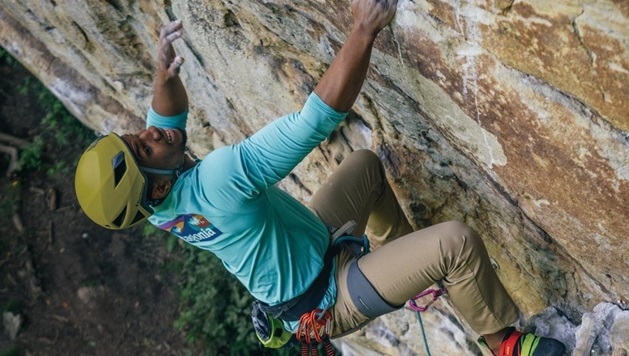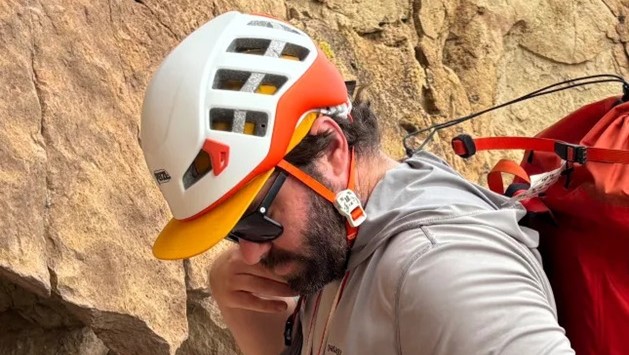Anyone who climbs is driven by adrenaline and excitement. After all, nothing feels quite like it when you reach your final goal. But while focused on reaching your next target, injuries can happen at any time. Climbing is an extreme sport that comes with inherent risks due to the heights. So, aside from wearing proper clothing and shoes, the most important thing you should do is protect your head.
To enjoy a safe adventure, buy a climbing helmet that’s lightweight yet sturdy and offers excellent impact absorption to protect your head from unexpected situations like sudden falls, or accidental impacts from rocks or falling debris. The helmet is there to safeguard you from anything that could potentially hurt you.
Why Climbing Helmets Are Essential

Climbing is an extreme sport that comes with real risks that could cause potentially fatal injuries. This is no joke. Whether you’re rock climbing or mountaineering, nothing prevents accidental falls 100%. There is always that 1% possibility that something could go wrong during the ascend or descend. For instance, a sudden fall can lead to serious injuries like skull fractures, concussions or even permanent brain damage. The head is the most vulnerable part of our bodies and becomes exponentially vulnerable during climbing.
Any direct hit in the head can mean a life-threatening consequence. To avoid potentially deadly injuries, buy a climbing helmet to ensure that you can enjoy your adventure safely and prevent climbing from turning into a disaster. And it doesn’t matter if you climb indoors or outdoors. While indoor climbing may not be as risky as the outdoors, it’s better to stay protected than be sorry later.
The helmet will absorb the impacts from the fall or hit, reducing the risk of severe head injuries. The outer shell of the helmet is sturdier and strong enough to protect your head from falling rocks, debris or accidental falls, while the inner layers of the shell help cushion the blow. Therefore, a helmet is an investment that could potentially save your life during your fun adventures.
And for anyone wondering “Can I use any helmet for climbing?” the answer is a solid no! You should use helmets specifically designed for extreme sports like climbing as they are able to withstand the impacts and falls that come with this sport. They are built tougher, have better padding and have a secure fit to ensure the helmet doesn’t slip from your head as you move. So, do not use your skateboard or bike helmet as a replacement for a climbing one. Do yourself a favour and stick to climbing helmets for the sake of your safety.
Choosing a Climbing Helmet: Features to Look For
Durability and Materials
A helmet designed for climbing is usually made from materials like polycarbonate or EPS foam, as these materials are tough enough to protect the head from any type of impact that may come with climbing. These materials also ensure that your helmet lasts for many years and still offers the same level of protection as the first time you got it.
Both polycarbonate and EPS foam are strong materials and exceptionally durable. They offer the best protection when it comes to the dangers of the sport. For instance, polycarbonate is a type of plastic that is super tough and that can resist cracks and damage caused by impacts. Because it’s a material that doesn’t crack that easily, polycarbonate is typically used in the making of the outer shell of the helmet.
EPS foam, on the other hand, is the material found inside the helmet as it has the ability to absorb the shock during an impact. The way it works is that the foam crushes slightly under pressure caused by a fall or impact, spreading out the force of the impact to a larger area rather than concentrating it on one spot. By doing so, the foam helps reduce the pressure on your skull.
Fit and Comfort
It’s important that the helmet fits comfortably on your head. That means that it shouldn’t be too tight or too loose. That’s why these helmets come with adjustable straps so you can get the fit that feels just right. The helmet should stay in place and not distract you from focusing on the climb.
Ventilation

Climbers can easily get sweaty during the activity, especially during summer. To stay comfortable and keep your head cool even during on hottest days, look for helmets with air vents. Air vents keep the sweat away by promoting better airflow around the head so you can feel comfortable enough, no matter the temperature.
Weight
The helmet should feel lightweight so you can wear it for hours without feeling any discomfort. The good news is that climbing helmets are typically lightweight and do not feel heavy on your neck and head like a regular helmet would.
Certifications: UIAA and CE Safety Standards
Check if the helmet is labelled with UIAA and CE certifications. These standards signify that the helmet has been tested for climbing and meets the safety guidelines so you can rest assured that it will protect you during any of your climbs.


